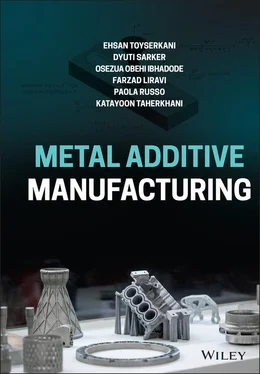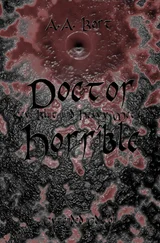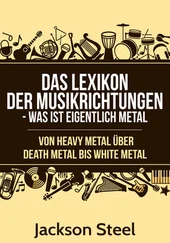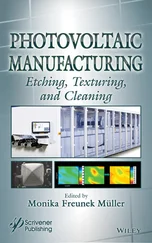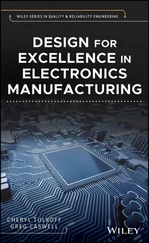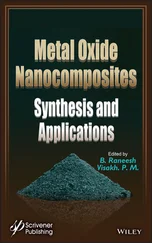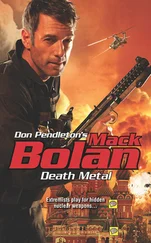Ehsan Toyserkani - Metal Additive Manufacturing
Здесь есть возможность читать онлайн «Ehsan Toyserkani - Metal Additive Manufacturing» — ознакомительный отрывок электронной книги совершенно бесплатно, а после прочтения отрывка купить полную версию. В некоторых случаях можно слушать аудио, скачать через торрент в формате fb2 и присутствует краткое содержание. Жанр: unrecognised, на английском языке. Описание произведения, (предисловие) а так же отзывы посетителей доступны на портале библиотеки ЛибКат.
- Название:Metal Additive Manufacturing
- Автор:
- Жанр:
- Год:неизвестен
- ISBN:нет данных
- Рейтинг книги:5 / 5. Голосов: 1
-
Избранное:Добавить в избранное
- Отзывы:
-
Ваша оценка:
- 100
- 1
- 2
- 3
- 4
- 5
Metal Additive Manufacturing: краткое содержание, описание и аннотация
Предлагаем к чтению аннотацию, описание, краткое содержание или предисловие (зависит от того, что написал сам автор книги «Metal Additive Manufacturing»). Если вы не нашли необходимую информацию о книге — напишите в комментариях, мы постараемся отыскать её.
A comprehensive review of additive manufacturing processes for metallic structures Metal Additive Manufacturing
Metal Additive Manufacturing
Metal Additive Manufacturing — читать онлайн ознакомительный отрывок
Ниже представлен текст книги, разбитый по страницам. Система сохранения места последней прочитанной страницы, позволяет с удобством читать онлайн бесплатно книгу «Metal Additive Manufacturing», без необходимости каждый раз заново искать на чём Вы остановились. Поставьте закладку, и сможете в любой момент перейти на страницу, на которой закончили чтение.
Интервал:
Закладка:
10 Chapter 10Figure 10.1 Topological and functional integrated design framework for AM....Figure 10.2 Multidiscipline optimization (MDO) for a multifunctional thermal...Figure 10.3 AM‐enable design framework.Figure 10.4 Design workflow for hybrid design solutions by topology optimiza...Figure 10.5 Multifunctional design methodology.Figure 10.6 AM model for product family design.Figure 10.7 Poor and good part orientation for the avoidance of the “curl ef...Figure 10.8 Types of support structures, from left to right: fill, lattice, ...Figure 10.9 Guidance on the use of support structures.Figure 10.10 Modification of circular profile to avoid “dropping effect.”...Figure 10.11 Hollow features printed with the hollow extrusion (a, b) perpen...Figure 10.12 Line‐of‐sight powder removal: (a) small radius, (b) large radiu...Figure 10.13 A feature with (a) sharp corners and (b) smooth corners.Figure 10.14 Design variations showing some thin sections that can encourage...Figure 10.15 The three classifications of structural optimization. (a) Sizin...Figure 10.16 Classification of topology optimization methods.Figure 10.17 How topology optimization transforms the structural form of (a)...Figure 10.18 Influence of volume fraction on interpolation function for SIMP...Figure 10.19 Linear filter for a 2D mesh.Figure 10.20 Classification of design‐dependent loads for topology optimizat...Figure 10.21 Thermomechanically loaded structures (a) with constant temperat...Figure 10.22 Workflow for density‐based topology optimization methods.Figure 10.23 Initial design domain and optimized bridge‐like designs with in...Figure 10.24 Different allowable minimum self‐supporting angles for satisfyi...Figure 10.25 Element density with supporting elements in a 2D FE mesh.Figure 10.26 Optimum designs showing difference in the topologies resulting ...Figure 10.27 Topology‐optimized half MBB beam with AM filter and Heaviside p...Figure 10.28 Optimized designs of an aerospace bracket. The right bracket wa...Figure 10.29 Neighboring elements to element e for a single layer.Figure 10.30 (a) Unconstrained and (b) constrained topology‐optimized cantil...Figure 10.31 Some examples of 2D unit cells.Figure 10.32 Some 3D unit cell types. (a) 3d Hexagon, (b) “X” shape, (c) oct...Figure 10.33 Relationship between a lattice structure and its framework.Figure 10.34 Lattice orientation showing Euler angles α , β , γ Figure 10.35 Uniform lattice structure.Figure 10.36 Comparison between (a) uniform and (b) conformal lattices.Figure 10.37 Voronoi‐based lattice structures. (a) Normal Voronoi structure,...Figure 10.38 Design workflow of multiscale geometric modeling of lattice str...Figure 10.39 SIMP results for 0.5 volume fraction with penalty value (a) set...Figure 10.40 Representative structures with a volume fraction of 0.5. (a) So...Figure 10.41 Library of surface‐based unit cells: (a) G (Schoen's Gyroid), (...Figure 10.42 Schwarz's P surfaces (for value of t = 0.37); (a) f P( x,y,z ) ≤ Figure 10.43 Example of a linear material grading for (a) strut‐based BCC la...Figure 10.44 Workflow for RDM method.Figure 10.45 Elements' centroids from strut j .Figure 10.46 Screening process for RDM.Figure 10.47 Effect of build orientation on a dogbone sample. (a) CAD model ...Figure 10.48 Orientation angles for framework build showing support structur...Figure 10.49 Angle threshold of ≤30° of cylindrical axis to building directi...Figure 10.50 Maximum displacement in the framework.Figure 10.51 Maximum residual stress in the framework.Figure 10.52 Volume of support structure used for the build.Figure 10.53 Residual stress and deformation plots for 22.5° rotation about ...Figure 10.54 Inverted Y (a) and Y “tree‐like” (b) structures supporting a th...Figure 10.55 Cantilever CAD geometry supported by lattice structures.Figure 10.56 Unit cell voxel types.Figure 10.57 Designs with intricate features supported by minimal cellular s...Figure 10.58 Workflow for integrated topology optimization and support struc...Figure 10.59 Different support types compared (Part in black and support in ...Figure 10.60 Enhanced workflow of a topology optimization integrated support...Figure 10.61 Workflow for redesign of aerospace bracket.Figure 10.62 Original CAD.Figure 10.63 Topology‐optimized solution and reconstructed design.Figure 10.64 Stress distribution of original design (a) and topology‐optimiz...Figure 10.65 Design domain, boundary, and load conditions.Figure 10.66 Topology‐optimized result from Altair HyperMesh.Figure 10.67 Printed and machined structural members.Figure 10.68 (a and b) Initial denture framework, (c) projection of X‐ray sh...Figure 10.69 Optical images of dental framework's (a) green state (b) sinter...Figure 10.70 Single‐cylinder internal combustion engine.Figure 10.71 Topology optimization of the crank and connecting rod with reco...Figure 10.72 Dynamic response of original (left) and topology‐optimized cran...Figure 10.73 Arbor press assembly.Figure 10.74 Images of printed components (a) base, rack, gear, handle, colu...Figure 10.75 (a) Printed column before cutting from substrate, (b) printed c...Figure 10.76 Design space for framework. The arrows indicate the loads on th...
11 Chapter 11Figure 11.1 Concept of closed‐loop control for a typical AM process.Figure 11.2 Light spectrum.Figure 11.3 Schematic diagram of sensor installation for detection melt pool...Figure 11.4 Types of radiations emitted from LPBF and captured by CMOS camer...Figure 11.5 Location of camera and light sources in the build chamber.Figure 11.6 The inline coherent imaging system.Figure 11.7 A computed tomography (CT) setup, showing the X‐Ray source, obje...Figure 11.8 The schematic of the beamline setup within the chamber [45].Figure 11.9 Schematic cross section of P–N photodiode.Figure 11.10 Schematic of in situ sensing equipment integrated on LDED.Figure 11.11 Schematic of the optical system using a pyrometer.Figure 11.12 Schematic of (a) dynamic and (b) condenser microphones.Figure 11.13 The schematic of the surface acoustic wave (SAW) sensor.Figure 11.14 The basic schematic of thermocouple.Figure 11.15 Thermocouple sensors placement in LPBF.Figure 11.16 Example of measurement by displacement sensor.Figure 11.17 Schematic of co‐axial and off‐axial setup in LPBF.Figure 11.18 Schematic overview of the feedback loop proposed for LPBF but c...Figure 11.19 Photodiode signal used in LPBF during the scanning using (a) ve...Figure 11.20 Results of in‐process LDED monitoring relationship between aver...Figure 11.21 Typical process zone in LDED and image processing: (a) original...Figure 11.22 PID controller integrated with a threshold and the identified p...Figure 11.23 Data acquisition for temperature signal recording and processin...Figure 11.24 Image segmentation method from initialization (first row) to th...Figure 11.25 Three layerwise optical tomography (OT) images used in LPBFFigure 11.26 Geometry distortion due to the use of a Galvo scanner.Figure 11.27 Concept of absolute limits algorithm.Figure 11.28 Concept of Signal Dynamics algorithm.Figure 11.29 Concept of short‐term fluctuations algorithm.Figure 11.30 Spatter detection: segmentation results based on IsoData, Otsu’...Figure 11.31 Support vector machine method: (a) possible hyperplane and (b) ...Figure 11.32 Neural network: (a) 3 input–1 output neural network and (b) sch...Figure 11.33 A deep learning approach to LPBF based on “Convolutional and Ar...Figure 11.34 ANFIS structure with two inputs and one outputFigure 11.35 Proposed fuzzy logic controller for LDED to control the bead he...Figure 11.36 Typical membership function in fuzzy logic controller used in L...Figure 11.37 Use of K‐means in LPBF: flowchart of the proposed processFigure 11.38 (a) An original image and (b) using K‐means to identify hot spo...Figure 11.39 SOM concept and iterations to map nodes to the input spaceFigure 11.40 2D cross sections of samples showing the distribution of the ar...Figure 11.41 Samples layout on the build plate: (a) R‐series and (b) T‐serie...Figure 11.42 Schematic of the defect detection process in EOSTATE MeltPool M...Figure 11.43 (a) An example of an image generated by the EOSTATE software fo...Figure 11.44 The population and distribution of indications for AL algorithm...Figure 11.45 The percentage of average and standard deviation of indications...Figure 11.46 The amount of shrinkage in the sample: (a) R2 – Location 4, (b)...Figure 11.47 Schematic of (a) a sample that is segmented in 82 batches and (...Figure 11.48 Schematic to compare the CT scan and EOSTATE software results t...
Читать дальшеИнтервал:
Закладка:
Похожие книги на «Metal Additive Manufacturing»
Представляем Вашему вниманию похожие книги на «Metal Additive Manufacturing» списком для выбора. Мы отобрали схожую по названию и смыслу литературу в надежде предоставить читателям больше вариантов отыскать новые, интересные, ещё непрочитанные произведения.
Обсуждение, отзывы о книге «Metal Additive Manufacturing» и просто собственные мнения читателей. Оставьте ваши комментарии, напишите, что Вы думаете о произведении, его смысле или главных героях. Укажите что конкретно понравилось, а что нет, и почему Вы так считаете.
